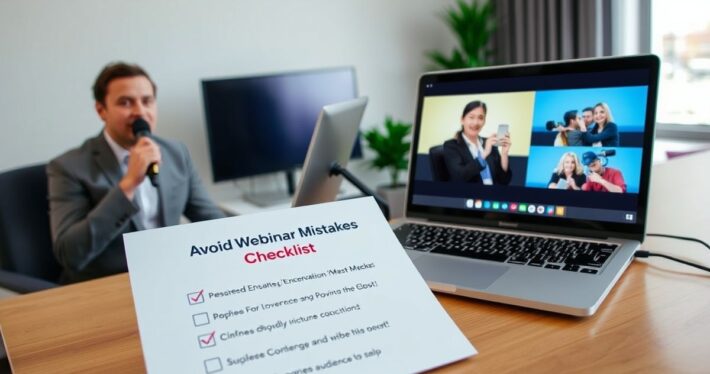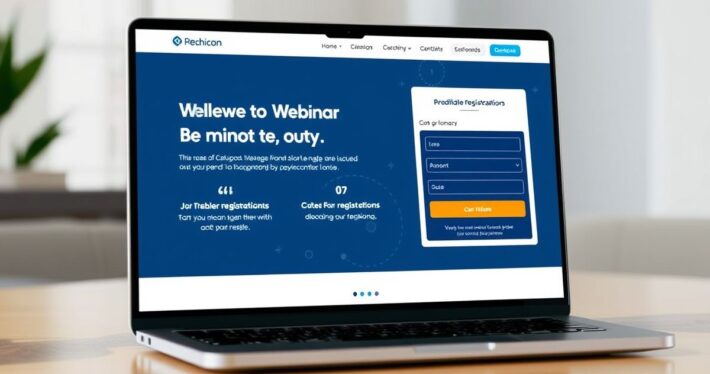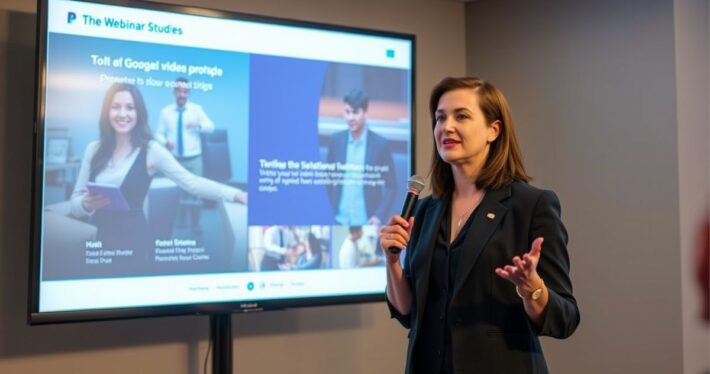Webinar Planning & Strategy

What Makes Webinar Planning & Strategy So Crucial?
Let’s be honest: webinars aren’t just about going live and talking for an hour. A well-planned webinar is a finely tuned machine designed to educate, engage, and convert. Whether you’re pitching a product, building an email list, or establishing authority in your niche, your webinar strategy can make or break your results. But how do you go from “just another webinar” to a high-converting event that leaves your audience craving more? That’s where planning and strategy come in.
In this guide, we’ll dive deep into the art and science of webinar planning. You’ll learn how to set clear goals, structure your content for maximum impact, and leverage tools that simplify the process. Ready to transform your webinars? Let’s get started.
Step 1: Define Your Webinar Goals
Before you even open your webinar platform, you need to know why you’re hosting this webinar. Are you looking to generate leads? Sell a product? Build brand awareness? Your goals will shape everything from your content to your call-to-action (CTA).
Here’s a quick breakdown of common webinar objectives:
- Lead Generation: Capture email addresses and build your list.
- Sales Conversion: Pitch a product or service.
- Authority Building: Establish yourself as an expert in your niche.
- Customer Education: Teach your audience how to use your product effectively.
Pro Tip: Be specific with your goals. Instead of saying, “I want more leads,” aim for “I want 50 qualified leads by the end of the webinar.”
Step 2: Understand Your Audience
Ever attended a webinar that felt like it was talking at you instead of to you? Don’t let that be your webinar. Understanding your audience is the cornerstone of effective webinar planning.
Ask yourself:
- What are their pain points?
- What questions do they frequently ask?
- What solutions are they searching for?
For example, if you’re targeting small business owners, focus on practical, actionable advice that saves them time or money. If your audience is tech-savvy, dive into advanced strategies without oversimplifying.
Real-World Example:
A SaaS company hosting a webinar for freelancers might structure their content around automating repetitive tasks. They’d highlight specific tools and workflows, making the webinar highly relevant to their audience.
Step 3: Craft a Compelling Structure
Now, here’s where it gets interesting. A webinar’s structure is like a story—it needs a beginning, middle, and end. Here’s a tried-and-true framework:
- Hook (First 5 minutes): Start with a bold statement, statistic, or question that grabs attention.
- Problem (5-10 minutes): Clearly define the pain points your audience is facing.
- Solution (30 minutes): Present your product, service, or strategy as the answer.
- CTA (10 minutes): End with a strong, clear call-to-action.
Pro Tip: Use storytelling to make your content relatable. Instead of just listing features, share a case study or success story that demonstrates your solution in action.
Step 4: Leverage AI-Powered Tools
Let’s face it—webinar planning can be overwhelming. That’s where AI-powered tools come in. Here’s how they can streamline the process:
- Slide Outline Creator: Simplify design and ensure your slides are both educational and engaging.
- Webinar Offer Builder: Structure your pricing and value stacks to maximize conversions.
- High-Value Bonus Brainstormer: Generate irresistible bonuses that tip the scales in your favor.
- Risk-Reversal/Guarantee Generator: Create guarantees that make saying “yes” a no-brainer.
Personal Anecdote:
I once spent hours trying to craft the perfect webinar offer, only to realize it still felt flat. Using an AI-powered offer builder, I was able to structure my pricing and bonuses in a way that tripled conversions. Sometimes, a little tech goes a long way.
Step 5: Optimize for Engagement
Engagement is the secret sauce of a successful webinar. Here are some tactics to keep your audience hooked:
- Interactive Q&A: Allocate time for live questions and answers.
- Polls and Surveys: Use interactive elements to gather feedback and keep viewers engaged.
- Breakout Rooms: For larger webinars, create smaller groups for discussion.
- Hot Seat Coachings: Offer live coaching to a few attendees—it’s a powerful way to demonstrate value.
Pro Tip: Don’t overdo it. One or two engagement tactics per webinar are plenty. Focus on what feels natural and aligns with your goals.
Step 6: Test and Refine
Even the best-laid plans can go awry. That’s why testing and refining your strategy is essential.
Here’s how to do it:
- Run Rehearsals: Test your tech, timing, and content before going live.
- Analyze Metrics: Look at attendance rates, engagement levels, and conversion rates to identify areas for improvement.
- Gather Feedback: Send post-webinar surveys to your audience.
Real-World Application:
After analyzing metrics from a series of webinars, a marketing agency discovered that their CTA was too vague. By refining it to include a specific action step (e.g., “Book a free consultation today”), they increased conversions by 20%.
Conclusion: Turn Planning Into Results
Webinar planning and strategy aren’t just about putting together a presentation—they’re about creating an experience that resonates with your audience and drives action. By defining your goals, understanding your audience, and leveraging the right tools, you can transform your webinars into a powerful marketing asset.
So, what’s your next step? Will you map out your goals, fine-tune your content, or explore AI-powered tools to streamline the process? Whatever you choose, remember: the key to success lies in thoughtful planning and strategic execution.
Now go out there and create a webinar that wows your audience—and delivers results.



